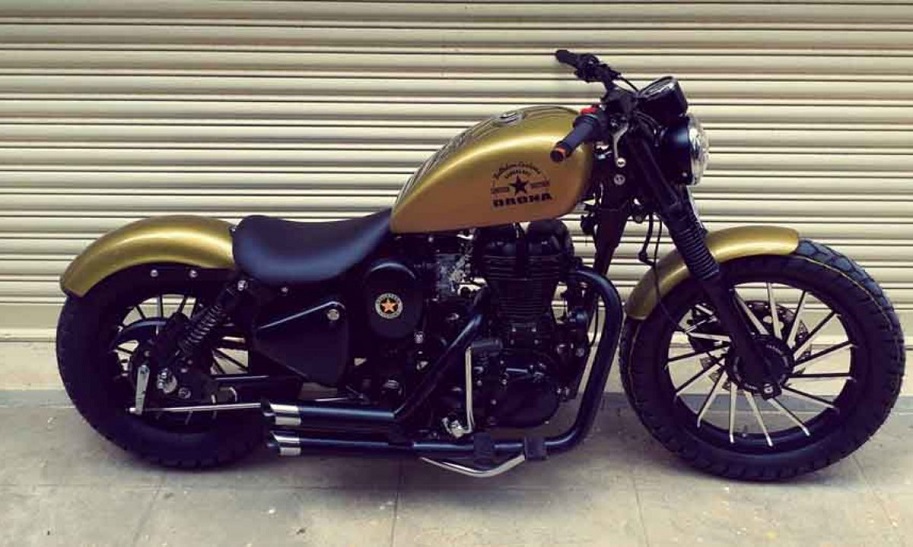Like any vehicle, motorbikes need regular maintenance. Service intervals are shorter than for cars or utes for one obvious reason, the engine and everything else just spins faster. Revving at over 10000 rpm, parts are put under more stress, so need regular checkups. Fluids, like oil and coolant, are changed at around 5000 km, depending on the bike, and filters are changed at the same time. Bikers do these on their own with a few simple tools. Easy repairs also include tightening loosened chains and replacing lights and switchgear. Also, changes to brakes, suspension setups and steering feel are easily done. A bit more complicated are engine parts, and that’s the time to visit your local mechanic.
This all falls in the regular routine of owning a bike. But what if you want to get a bit more performance, add a little comfort and convenience in the mix, and also improve safety? There are many inexpensive aftermarket motorbike parts that will give your bike that extra push, while providing for a safer and comfier ride.
Performance Upgrades

You might not have the cash to splash on the fastest and most expensive bike, but a few inexpensive mods can get you to those max speed numbers just that much closer. For better airflow with cleaner air, and more of it, replace the stock air filter. You can go for three different types, each getting better as prices and material quality increase. The cheapest are paper air filters, which do a good job at removing pollutants. Better are oiled foam filters, which also remove grease and oil, and the best and most expensive are cotton filters. These remove anything that can get into the engine, so you’re paying for increasing engine longevity.
To get the best out of a good filter, bikers also replace the stock exhaust. Again, better airflow here means increased performance. Replacement exhausts solve the issue of airflow restriction which can clog or choke the engine, and rob you of a few horses. Exhaust pipes can also be modified to produce more rumble, if that’s what you like or alternatively, completely delete muffler sounds. You can find exhausts for different bike types, from dirt bikes to café racers and adventure bikes and all the way up the fastest sports bikes. More expensive variants, providing the best performance upgrades, are made of carbon fibre and titanium mixes and reduce overall weight.
Upgrading your brakes to bigger rotors and grippier pads means you can bring your bike to a stop in a shorter distance. There’s no need to mention what this means and where it’s necessary. Also, having better brakes lets you brake later into bends, while carrying more speed. Front brakes do more of the braking, so need more attention. You can change out the rotor or add another rotor to the front brake mech, and swap out the back brakes for something with a bit more bite.
Wheels also affect performance. Wheels are either spoked or alloy, and each is suited for different types of riding. A pair of lighter wheels cut down on the kilos and add some speed. Adventure and dirt bikes have spoked wheels for better bump absorption. Check for bent or broken spokes and the condition of the bearings. Also, choose the right tyres for the surface. Grippier tyres not only stick better to the road, but are also safer.
Comfort

There’s a slew of motorbike parts that can get you comfier than you already are. This is both for the rider and the pillion. Seat height is one area where new riders get things wrong, and seats are the first things changed. Aftermarket seats with more height adjustment and better padding are good for getting cozy. Make sure to get a non-slip surface, so you don’t slide along the seat as you ride. For the pillion, additional backrests with better padding are good for bigger bikes, especially tourers and cruisers. And to keep seats dry when parked, get a seat cover.
Buffeting wind can become a nuisance in longer rides, but you can always get a taller windshield, and most have adjustable height settings. Fairings do a similar job. To avoid hands from going numb, heated grips are a good option, and are often paired with handguards. There’s more adjustment to the handlebars. You can put risers in to get a higher reach, or swap out the handlebar to something that gives you more confidence. Ensure that you have a riding position that isn’t too far stretched. Popular handlebar types are straight bars, ape bars, drag bars and tracker bars.
Safety

Besides having uprated brakes, bash plates shield lower engine components from rocks, branches and debris and are a necessity when taking your bike off-road. There are also side crash bars that carry the weight of the bike if you fall, so no damage here. Both types of protective gear can save you heaps of cash.
Convenience

This is a category with a wider scope, meaning riders can outfit their bikes to change the looks, or add some functionality. Popular items include modified fuel tanks to get better range, additions like longer and wider footpegs, changes to suspension setups when carrying passengers and more weight, and for longer rides days at a time, various luggage options like top boxes and tank bags.
Aftermarket vs OEM Parts

Depending on the motorbike parts you want or need to be changed, you can choose to get OEM parts direct from your bike manufacturer or third-party aftermarket parts. Engine components are things to get as OEM, while most of the items mentioned here are better sourced as aftermarket parts. These are usually cheaper but don’t fall behind in quality. In fact, for things like exhausts and air takes, aftermarket parts are of higher quality and better materials. Prices vary from brand to brand, so a good idea is to consider what you need and make a detailed list as to what you want to upgrade.

